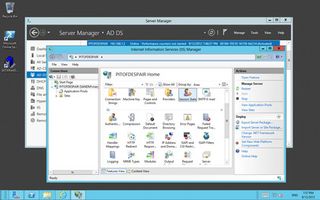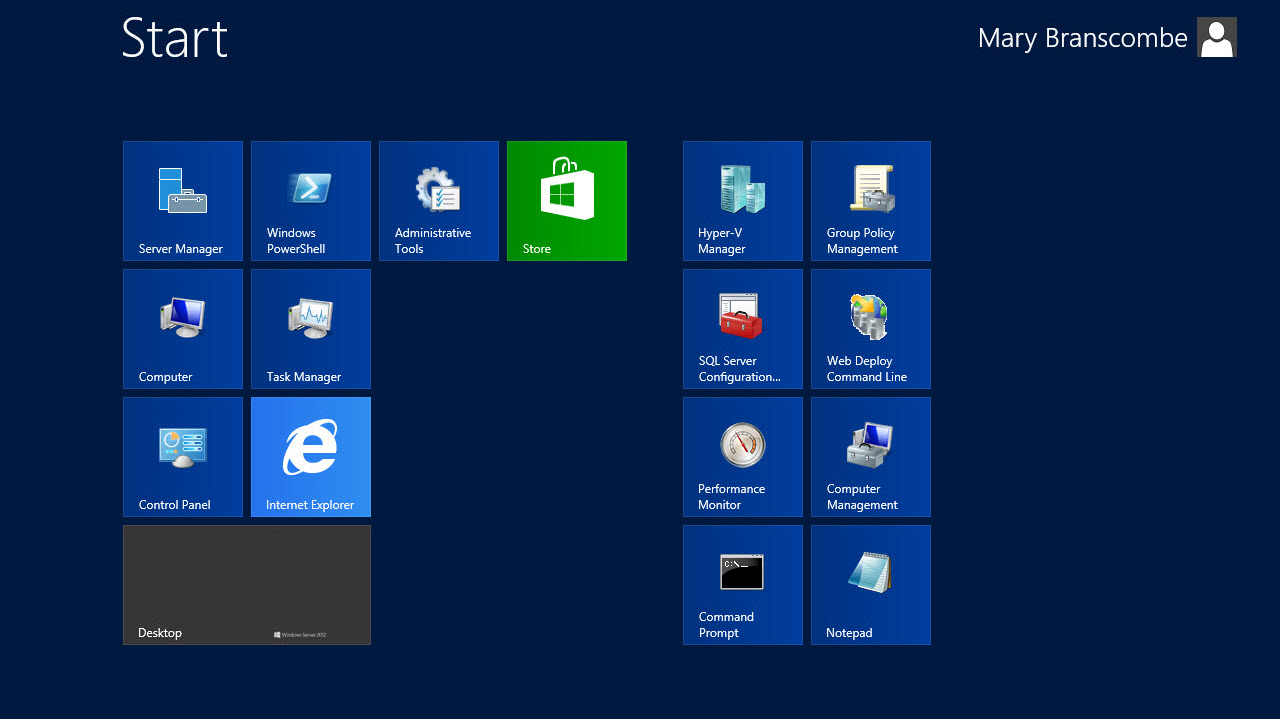Why you can trust TechRadar
Remote management is key to Server 2012; with Server Core now the default installation, Microsoft doesn't expect admins to be sitting in front of the server they're working on, and once you connect remotely into one server you can then manage multiple servers, setting up workflows that run across multiple machines and dealing with issues that affect more than one system. If a service is down on multiple servers you can select them all in Server Manager and right-click to restart the service on all of them at once.
When you select multiple servers you get a combined view of events and alerts from all of them, which can be a big help in diagnosing issues. Equally important is the fact that all of this is based on standards that will allow third-party tools the same comprehensive access to remote management on Windows Server 2012 systems.
If you haven't tackled PowerShell yet, you're going to want to; there are over 2,400 new commandlets to work with including ones for Hyper-V 3. The Integrated Scripting Environment has lots of improvements - like Intellisense to help you get commands right - and several wizards let you copy the PowerShell script created from your choices to study or reuse.
Additionally you can program the secure multimachine workflow engine with PowerShell, so you could create a script to stop IIS, deploy a web app and then restart IIS, using workflow to make sure each script has completed before the next one starts.

Incidentally, IIS has improvements including support for HTML5 and Web Sockets, making it a much more appealing platform for hosting web applications and services. The Web Platform Installer tool is built in, giving you a fast way to get components and applications so you can go from a new installation to a functioning server far more quickly.
If you only have one server and you're not comfortable with remote tools, there's a more secure option between Server Core - which has better performance, is more secure and needs less patching because there simply isn't as much code running - and the full GUI; this gives you a GUI without Explorer and Internet Explorer.
There are remote access improvements for users as well. Remote Desktop is far faster; fast enough to use over a decent DSL connection and you no longer need specific graphics cards to get RemoteFX video support.
Direct Access goes from being only for network gurus with edge servers and IPv6 to a simple wizard you use to enable remote access to file servers without needing VPN. It remains a little more complex to set up for a small business than we'd like (we weren't able to get it working at all on one test network behind a typical small business firewall and NAT router), but like many Windows Server 2012 features it's much easier to work with than in Server 2008 R2.
Put the virtualisation, storage features and remote management together and you see why Server 2012 has so much potential. You can take a VM that's running on an SMB share with a storage pool of multiple drives and fail it over to another server, almost as fast as if it was physically connected to the other server, without any interruption. And you can do it all from the management tools on whatever server you've remotely accessed into, from your desktop PC or your Windows 8 tablet, without needing expensive and specialised server systems.
On the other hand, if you do have a more sophisticated network, Windows Server 2012 becomes the place where you manage external storage devices and network devices and everything else that connects to the server.
Current page: Remote access, remote management
Prev Page Virtualising everything Next Page Working with Windows Server 2012Mary (Twitter, Google+, website) started her career at Future Publishing, saw the AOL meltdown first hand the first time around when she ran the AOL UK computing channel, and she's been a freelance tech writer for over a decade. She's used every version of Windows and Office released, and every smartphone too, but she's still looking for the perfect tablet. Yes, she really does have USB earrings.














